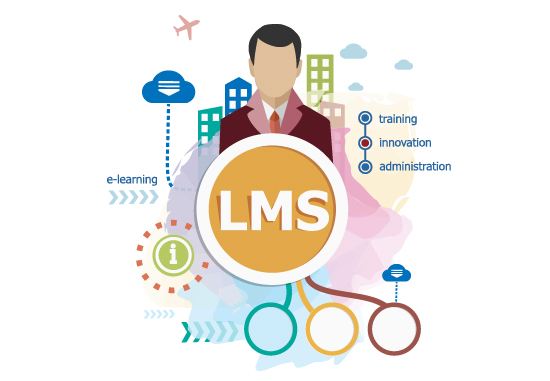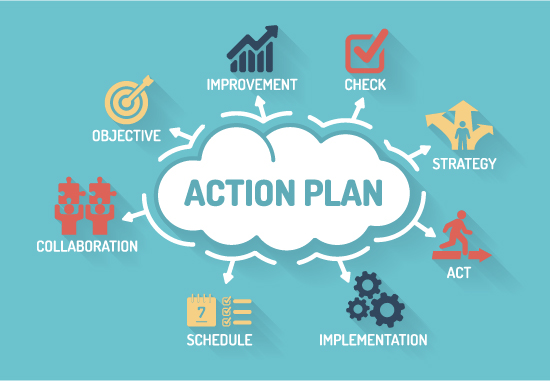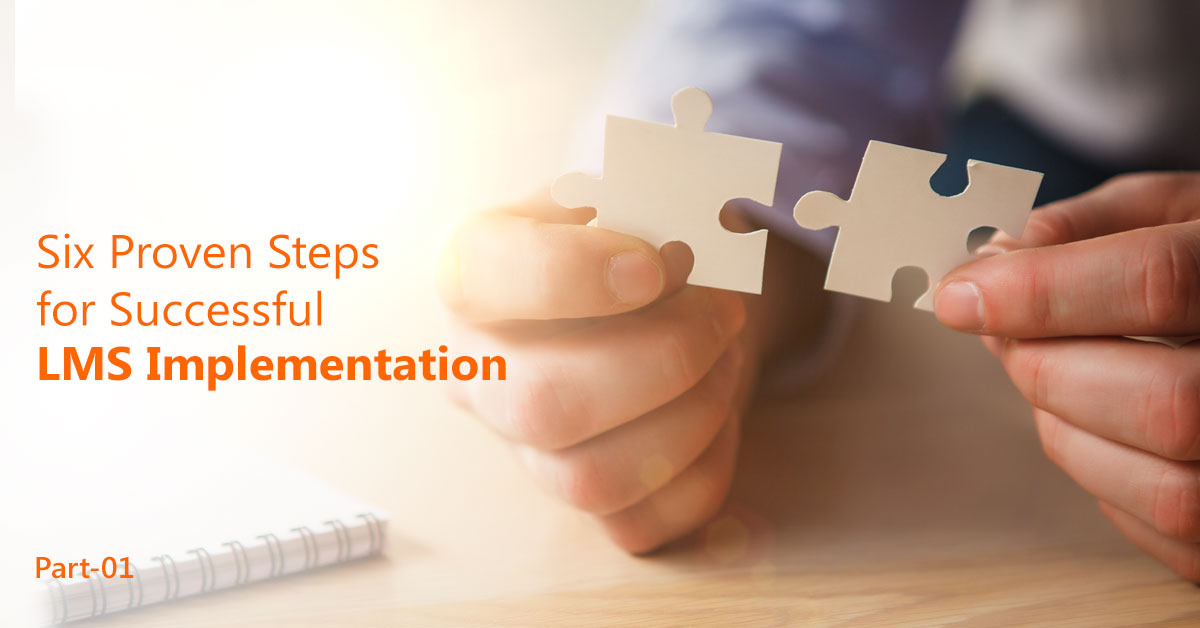On this Page
Six Proven Steps for Successful LMS Implementation:Introduction to LMS Implementation
How do you implement an LMS successfully?
What does it comprise?
Will the investment be worth the effort?

Like these, there are a plenty of other questions that arise in the minds of first-time LMS buyers/users, right from what is the basic purpose of having an LMS. In our previous blog 6 Questions Your LMS Must Answer Before You Plan to Implement It we discussed how these questions are important to be answered before implementing an LMS. In this blog, we will discuss the process of implementing an LMS.
Implementing an LMS is a significant investment in terms of cost and time. Also, this process has the potential to prove disruptive for the organization. How? Irrespective of whether you are implementing an LMS for the first time or performing a major upgrade to the existing system, lack of appropriate planning may risk the resources you have managed to get in place and may lead to extensive delays in implementation, unwanted outcomes, and problem areas that are likely to spoil the user experience. Hence, implementing an LMS is an essential process that needs to be done with attention to detail for a successful outcome.
There is a proven process that involves six important steps for successful implementation of an LMS. These are:
- 1. Planning
- 2. Configuration
- 3. Integration
- 4. Migration
- 5. Testing
- 6. Go Live
We will be discussing these six steps in detail in our upcoming blogs.
But, before we go ahead with understanding these steps, the process has certain pre-requisites. These are two things that need to be done beforehand. They are:
- 1.
Assembling the team

Getting started includes assembling an implementation team. Perhaps, a core team that is solely responsible for the end-to-end implementation of the LMS and act as a point of contact for decision-making. The core team will comprise:
-
- 1.Team Leader
- 2.Project Manager
- 3.eLearning Technology Specialist
- 4.Training Administrator
- 5.IT Architect
Apart from the core team, an extended team is required that can work on managing the course material, training, and registration after successful implementation of the LMS.
- 2.
Setting up the implementation timeframe

This will include setting up time frames of individual aspects that are necessary for an on-premise implementation of an LMS. Assuming there is appropriate availability of required resources, implementation of an LMS that is hosted on the premise can take up to 6-8 months. Thereafter, vendor-hosted solutions referred to as ‘Cloud’ or Software as a Service’ solutions may take up to 3 more months’. Hence, you must clearly define your requirements and pick an LMS that is apt for them. These choices will then state the complexity and variability that will be needed to support the functions of your organization.
Once you have this set up ready, you can proceed with the first step which is Planning.
#1 Step: Planning
Prof. Michael Porter once said, “The essence of strategy is choosing what not to do.”

Planning and having a strategy in place begins with knowing what not to do. It may sound simple, but lack of knowledge and upfront planning without thinking it through may not be the right choice. Planning is critical and not only at the outset of the project, but across the project work. In case of LMS implementation, you should be prepared to witness unanticipated needs and new challenges, and have a strategy in place to deal with these. Continuous changes in planning and refinements in the planning are an integral part here. A knowledgeable Project Manager will be the right person to take this responsibility.
To begin with, have the specifics of the LMS requirements ready. Here, you can connect with your LMS vendor and ask for a project plan template.
The vendor would include almost all the tasks required to implement the LMS as per their understanding. However, you can start off with adding up tasks that may not be added by the vendor but may hold importance to your organization. For example, you may add up tasks related to data cleanup, communications planning, user acceptance testing, change management planning, end user support function, etc. This will also help you examine the current business processes and identify loopholes which can be later addressed.
You must also understand that your planning needs to be aligned with the overall purpose of implementing an LMS. Picking the right LMS that meets the requirements of your organization should be backed by a thorough research about the features of the LMS—what you will require vs. what you won’t.
Once you have planned well, it is followed by Configuration as the next step. We will discuss how to configure an LMS in detail in our next blog. So, stay tuned!
If you have any queries related to the first step, or anything related to an LMS, feel free to write to us!


